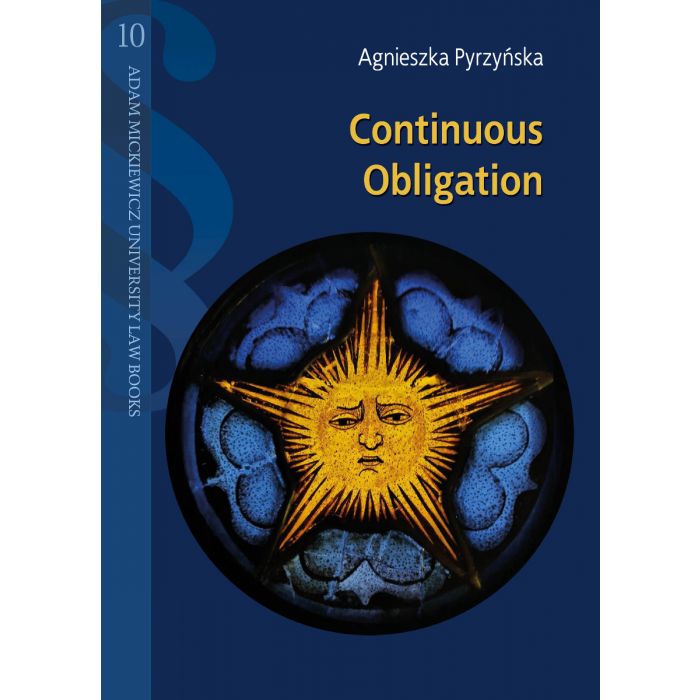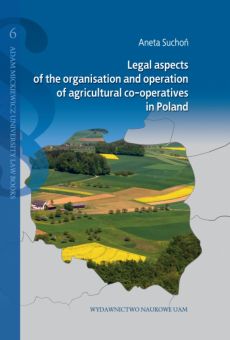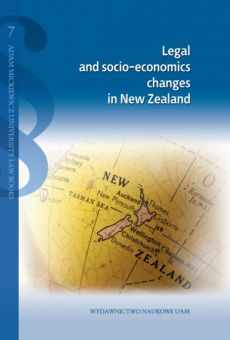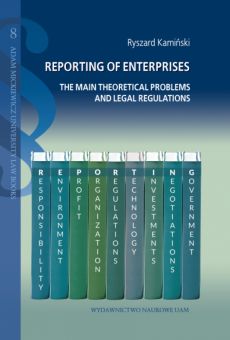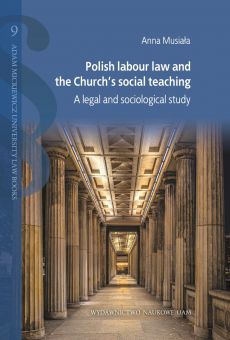Continuous obligation
- In Stock: in stock
- ISBN: 978-83-232-3767-9
- Category: Law, Adam Mickiewicz University Law Books
- Year of publication: 2020
The concept of continuous obligation, or a similar construct, is used in many legal systems. However, it is rarely the subject of general statutory regulation, or of doctrinal considerations conducted in a systematic manner. The specific nature of obligations whose structure involves the element of time is widely recognised, but as yet no uniform conception has been developed.
The monograph contains a description of continuous obligation in the Polish civil law system. Reference to views expressed on the basis of other legal systems is made only to the extent necessary for achieving the adopted research objective, namely, a description of continuous obligation from a theoretical perspective. Due to the limited scope of this publication, the analysis and considerations focus on four fundamental issues: (1) the essence of continuous obligation; (2) the possibility of distinguishing certain general types or models of continuous obligation, and then of identifying specific types of continuous obligation within the general framework; (3) the duration of continuous obligation; and (4) the termination of continuous obligation as an institution particularly suited to the expiration of a obligational relationship of a continuous nature.
This publication is an abridged and modified version of the original book published in Polish, entitled Zobowiązanie ciągłe jako konstrukcja prawna (Poznań 2017).
LIST OF ABBREVIATIONS
INTRODUCTION
Chapter I
CONTINUOUS OBLIGATION – THE ESSENCE OF THE CONSTRUCT
1. The significance of the element of time in civil law relationships
2. The concept of continuous obligation
2.1. Permanent legal relationships
2.2. Continuous obligation in the light of Polish doctrine and jurisprudence
2.3. The author’s stance on this issue
Chapter II
TYPES OF CONTINUOUS OBLIGATION
1. General comments
2. Continuous obligations of a self-executing (independent) nature
2.1. Self-executing continuous obligations resulting from the law
2.2. Self-executing continuous obligations resulting from legal acts
3. Non-self-executing continuous obligations
3.1. General remarks
3.2. Non-self-executing obligations in the law of obligations
3.3. Non-self-executing continuous obligations in other sections of civil law
Chapter III
THE DURATION OF CONTINUOUS OBLIGATIONS
1. The division of continuous obligations according to the criterion of duration
1.1. General remarks
1.2. Continuous obligations whose duration is determined in a direct manner
1.3. Continuous obligations whose duration is determined indirectly
1.4. The duration of continuous obligations – special cases
2. The period (time limit) and condition as events affecting the duration of a continuous obligation
Chapter IV
THE TERMINATION OF CONTINUOUS OBLIGATIONS
1. Characteristics of termination
1.1. General observations
1.2. Subjects with the right to terminate
1.3. The legal basis for termination
1.4. The content of a declaration of intent to terminate
1.5. The effect of termination
1.6. The non-self-executing nature of termination
1.7. The invalidity of termination
1.8. Termination as an abuse of right
1.9. Waiving the right to terminate
2. The function of Article 3651 of the CC
BIBLIOGRAPHY
Autorka omawia jedną z najbardziej ogólnych konstrukcji prawa zobowiązań, znajdującej zastosowanie zarówno do stosunków zobowiązaniowych nawiązanych na podstawie czynności prawnych, jak i z mocy ustawy. Przedstawia szczegółowo istotę zobowiązania ciągłego, jego trwanie w czasie i wypowiedzenie oraz podejmuje próbę wyróżnienia typów zobowiązań ciągłych.
| Detailed information | |
|---|---|
| Introduction |
Download file

|
| Contents |
Download file

|
|
|
|
| Publication Version | printed |
| Format | 17,0 x 24,0 |
| Type of publication | Monografia |
| Edition | I |
| Series | Adam Mickiewicz University Law Books No 10 |
| ISBN | 978-83-232-3767-9 |
| Number of pages | 142 |
| Number of publishing sheets | 10,00 |
| Type of binding | hardcover |
